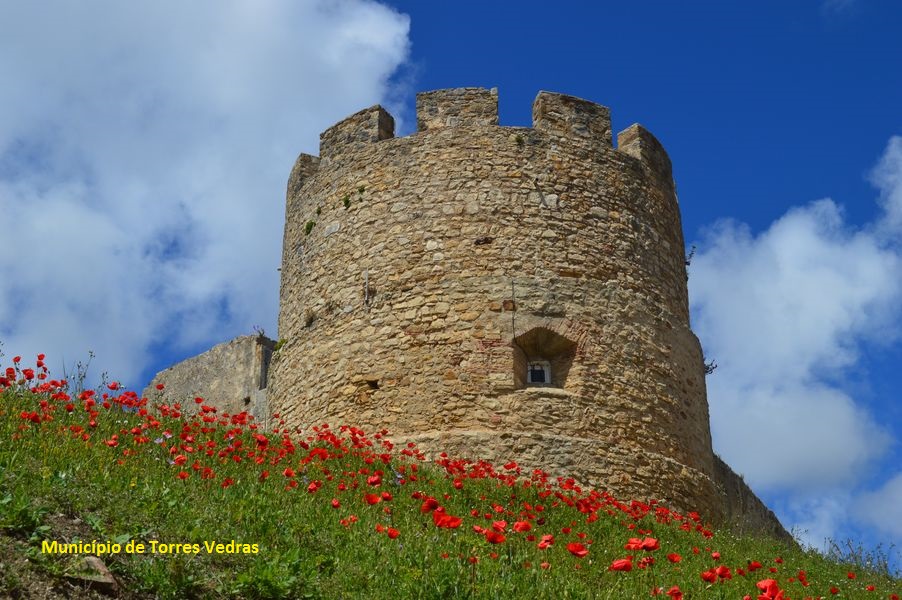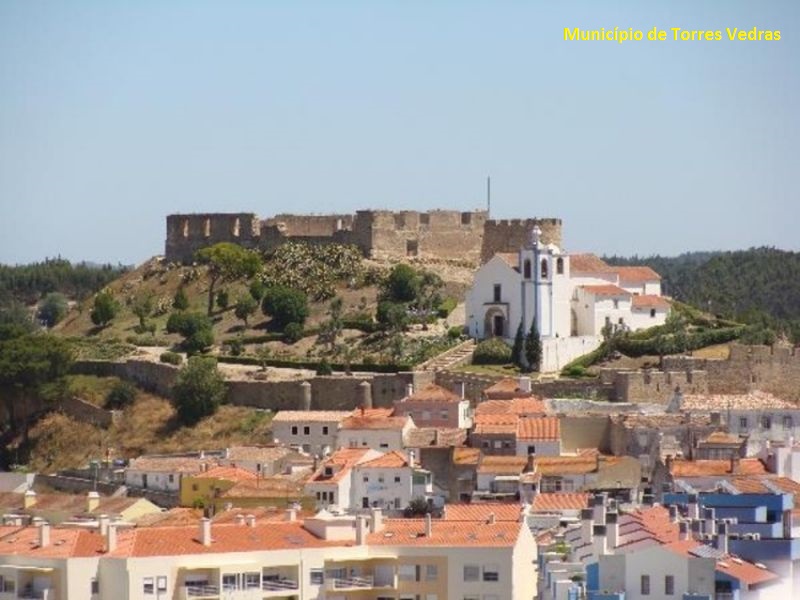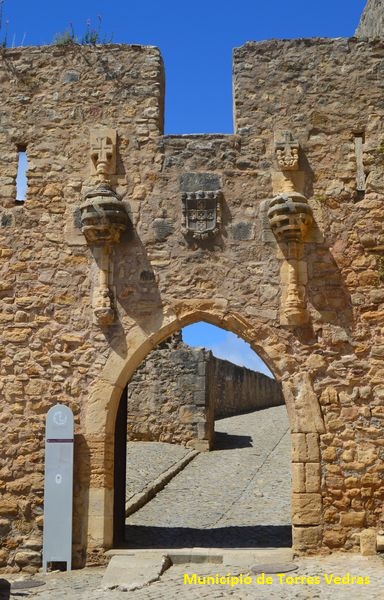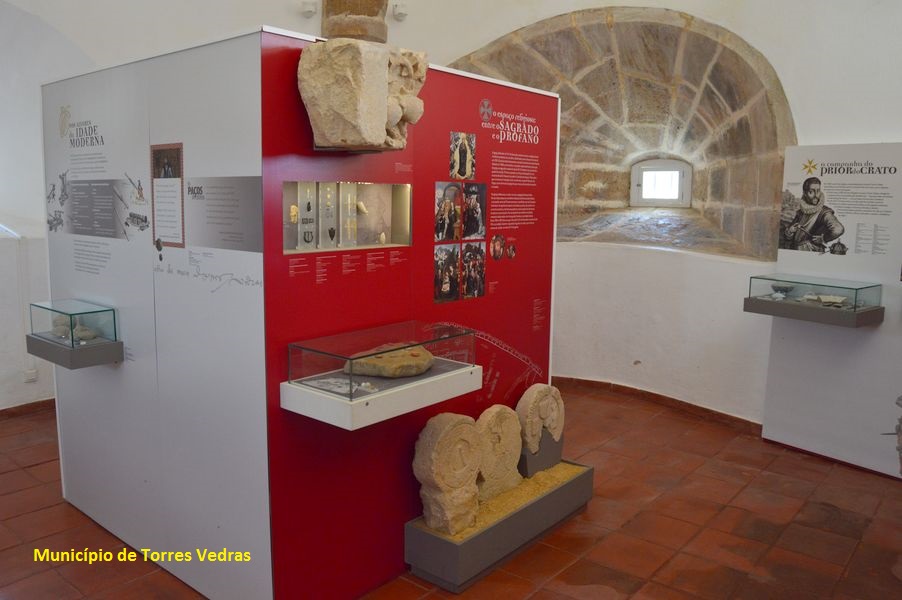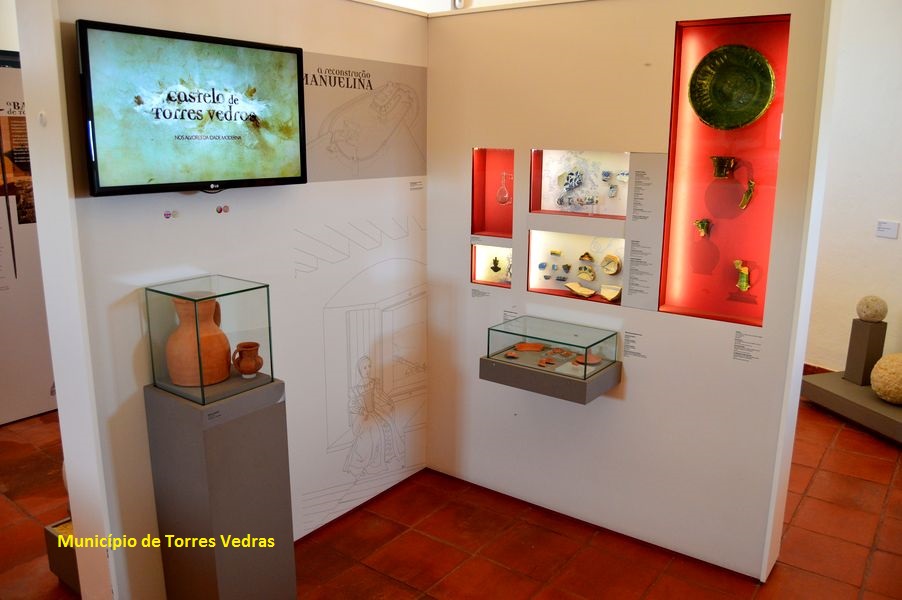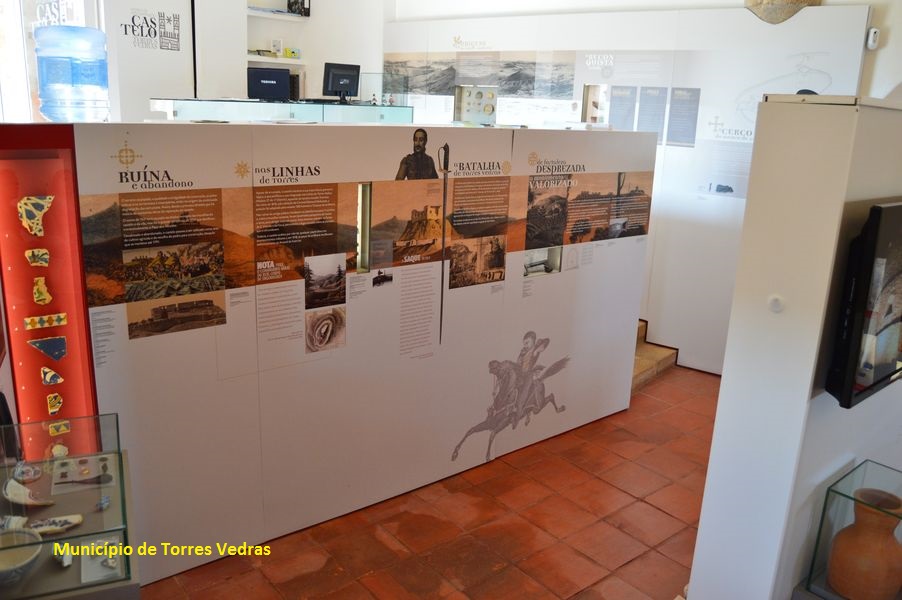&nbps
Share Image
The castle exhibition center welcomes and provides information to visitors on the history of this monument, its architectural features and its heritage. It interprets and disseminates information about the built complex, with scientific rigor and exhibits objects representative of its different historical experiences, for the purpose of education and motivation of the visit, providing the public with the instruments that allow it to explore, interpret and enjoy the monument autonomously.
The castle is classified as Imóvel de Interesse Público (Property of Public Interest), with Roman and Arab remains; however, its origin is not fully understood, supposing that there was a primitive Arab castle, conquered by the first Portuguese king, Afonso Henriques, in 1148. Torres Vedras village was donated to Fuas Roupinho, the same nobleman of the miracle of Nazaré. It is, however, in the reigns of the kings Dinis, Fernando and Manuel I that the castle underwent the principal alterations, and the royal shield of this last king is there by two armillary spheres surmounted by Cross of the Order of Christ, to whom the castle was donated. Also in the 16th century was built a semicircular turret on the southeast side, with only two floors, having inside a vaulted room.
From the Middle Age, the castel was transformed into the palace of the mayors, and the walls were very damaged by the earthquake of 1755 that destroyed Lisbon and several other places in Portugal. However, during the French invasions in 1809, it was integrated into the Torres Vedras Lines for Lisbon defense. In 1846, the gunpowder store exploded during the attack by the troops of the then Duke of Saldanha, in the so-called Battle of Torres Vedras, perhaps the most important in the career of that soldier and politician in the reign of Queen Maria II, but continued to function as a troops quarter until the end of the 19th century.
-
Torres Vedras castle Interpretation Center
-
The castle exhibition center welcomes and provides information to visitors on the history of this monument, its architectural features and its heritage. It interprets and disseminates information about the built complex, with scientific rigor and exhibits objects representative of its different historical experiences, for the purpose of education and motivation of the visit, providing the public with the instruments that allow it to explore, interpret and enjoy the monument autonomously.
The castle is classified as Imóvel de Interesse Público (Property of Public Interest), with Roman and Arab remains; however, its origin is not fully understood, supposing that there was a primitive Arab castle, conquered by the first Portuguese king, Afonso Henriques, in 1148. Torres Vedras village was donated to Fuas Roupinho, the same nobleman of the miracle of Nazaré. It is, however, in the reigns of the kings Dinis, Fernando and Manuel I that the castle underwent the principal alterations, and the royal shield of this last king is there by two armillary spheres surmounted by Cross of the Order of Christ, to whom the castle was donated. Also in the 16th century was built a semicircular turret on the southeast side, with only two floors, having inside a vaulted room.
From the Middle Age, the castel was transformed into the palace of the mayors, and the walls were very damaged by the earthquake of 1755 that destroyed Lisbon and several other places in Portugal. However, during the French invasions in 1809, it was integrated into the Torres Vedras Lines for Lisbon defense. In 1846, the gunpowder store exploded during the attack by the troops of the then Duke of Saldanha, in the so-called Battle of Torres Vedras, perhaps the most important in the career of that soldier and politician in the reign of Queen Maria II, but continued to function as a troops quarter until the end of the 19th century.
-
Lisboa e Vale do Tejo
-
Torres Vedras
-
Serras do Socorro e Archeira Local Protected Landscape
-
Município de Torres Vedras
Identification and Access
-
Identifying and informative signs of the infrastructure. Road signs.
-
Access to Torres Vedras coming from:
- Lisboa - A8 direction Leiria to the exit 7 – Torres Vedras Sul or follow to N8 by Venda do Pinheiro and Turcifal to Torres Vedras.
- Porto - A1 exit direction Aveiro, converge with A25, continue in A17 direction Leiria. Take A8 to the exit 8 – Torres Vedras Norte or take N1 by Leiria to Rio Maior. From Rio Maior take IC2 to Alcoentre and N115 to Torres Vedras.
GPS: 39.093872, -9.261328
Public transports
Buses
Rede Nacional de Expressos to Torres Vedras.
Barraqueiro Oeste from Lisbon - Campo Grande (near the metro station), direct to Torres Vedras.
Train - Linha do Oeste to Torres Vedras.
Contacts, Schedules and other informations
-
Interpretation Centre
-
Store
Exhibition | interpretation space of natural and cultural values
Paths
Guided tours
Cultural Activities
-
Torres Vedras Castel
Largo Coronel Morais Sarmento
2560-602 Torres Vedras
E-mail: castelo@cm-tvedras.pt
Phone: (00351) 261 148 630
-
Gratuito / Free
-
Sept. To May – 10 am – 1 pm and 2 pm – 6 pm. June to Aug. Closes at 7 pm.
-
Monday, Jan. 1, Sunday and Mardy Gras, Easter Sunday, May 1, Dec. 24-25.
-
No
Tips
-
Inside the castle also visit the church of Santa Maria do Castelo with its Romanesque sections, classified as National Monument. In Torres Vedras, admire the City Hall, the Fountain of the Canos, the churches of S. Pedro and Santiago and the Misericórdia chapel. Don’t forget to taste the famous Torres Vedras bean pastries.








